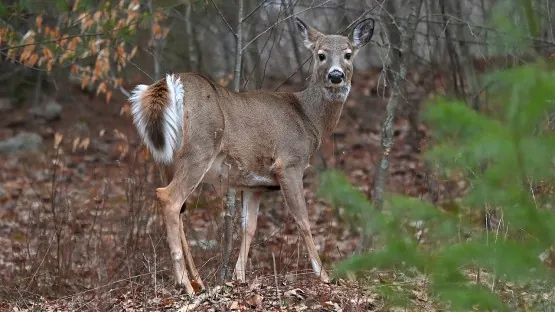
Revolutionizing Wildlife Conservation: An AI Breakthrough
2025-09-15
Author: Mei
In a groundbreaking fusion of business acumen and wildlife preservation, a revolutionary new decision model has emerged, promising to dramatically enhance how we tackle wildlife diseases. This innovative strategy, showcased in a recent study published in the Proceedings of the National Academy of Sciences, allows for earlier detection of diseases while cutting costs.
Developed by researchers from the College of Veterinary Medicine and the Smith School of Business at Queen’s University in Canada, this model is capable of spotting chronic wasting disease (CWD) in New York state white-tailed deer up to 8.4 months earlier than current methods. It addresses a pressing challenge faced by wildlife populations increasingly threatened by emerging diseases amid ever-tightening budgets for management.
Traditionally, wildlife-management agencies have operated reactively, only allocating resources once a disease is detected. As co-lead author Krysten Schuler notes, "By the time the first case is detected, the disease could already be spreading unnoticed for a long time." This delayed response often leads to significant challenges, as proactive measures can be prohibitively expensive for underfunded management groups.
The collaborative effort, led by Schuler and co-lead author Jue Wang, resulted in an AI-driven optimization model that strategically allocates surveillance budgets across various regions. By testing this model with a theoretical $500,000 budget spread over 10 years across all 62 counties in New York, researchers found it could spot CWD in deer earlier or reduce costs by 22% without sacrificing effectiveness.
Wang elaborated on the challenges of managing emerging diseases: "They can appear almost anywhere across vast landscapes, making it hard to know where to focus attention. Our model offers clear guidance on where and when to invest in prevention and surveillance, especially with limited budgets."
This innovative AI tool isn't just beneficial for wildlife diseases; its applications extend to combating invasive species and managing infectious diseases in agriculture and public health as well. Schuler enthusiastically acknowledged the potential, saying, "The applications of this model are endless."
As this approach continues to evolve, the hope is that it will pave the way for more effective and sustainable wildlife conservation strategies, ultimately leading to healthier ecosystems and robust wildlife populations.






 Brasil (PT)
Brasil (PT)
 Canada (EN)
Canada (EN)
 Chile (ES)
Chile (ES)
 Česko (CS)
Česko (CS)
 대한민국 (KO)
대한민국 (KO)
 España (ES)
España (ES)
 France (FR)
France (FR)
 Hong Kong (EN)
Hong Kong (EN)
 Italia (IT)
Italia (IT)
 日本 (JA)
日本 (JA)
 Magyarország (HU)
Magyarország (HU)
 Norge (NO)
Norge (NO)
 Polska (PL)
Polska (PL)
 Schweiz (DE)
Schweiz (DE)
 Singapore (EN)
Singapore (EN)
 Sverige (SV)
Sverige (SV)
 Suomi (FI)
Suomi (FI)
 Türkiye (TR)
Türkiye (TR)
 الإمارات العربية المتحدة (AR)
الإمارات العربية المتحدة (AR)